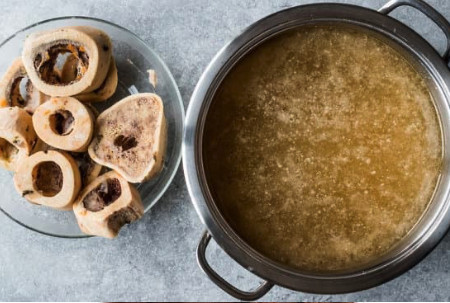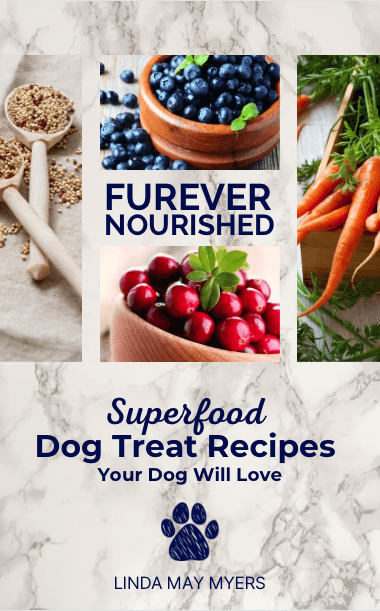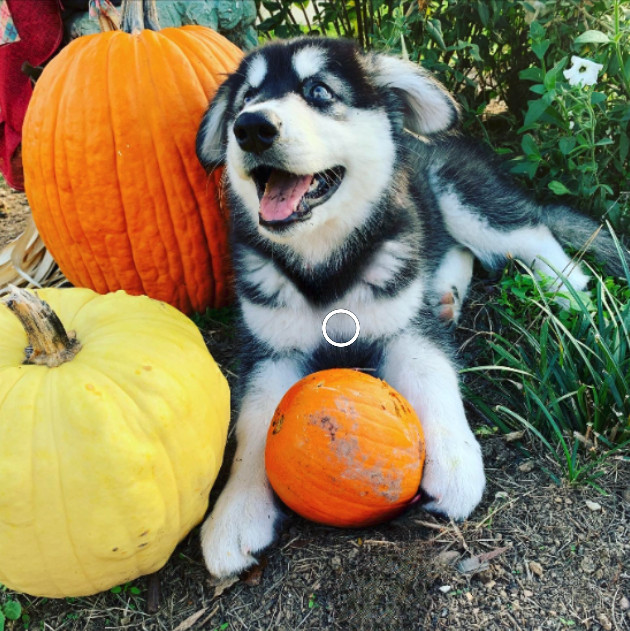
Thanksgiving is a time to be thankful, eat yummy food, and spend time with the people and pets we love. But not all the food on your plate is safe for your dog.
Let’s talk about what foods are okay for dogs and what foods should stay far away from their bowl.
Foods That Are a Big No in Our House
Even though Waffles gives me that sweet look, there are some things I never let him have. These can be dangerous, even if it’s just a little bite.
- Turkey bones can break and hurt their throat or belly. Waffles doesn’t get any bones.
- Stuffing made with onions or garlic is not safe for dogs.
- Chocolate or sweet treats with fake sugar like xylitol can make dogs very sick.
- Grapes or raisins, sometimes in salads or desserts, can hurt their kidneys.
- Creamy foods, casseroles, and buttery dishes upset tummies and can be too rich.
- Alcohol is very harmful to dogs, even in small amounts.
What Waffles Is Allowed to Enjoy
Now for the good news. Some Thanksgiving foods are safe for dogs, but only if they are served plain and in small bites. Here’s what I let Waffles enjoy:
- Plain turkey breast with no bones or skin. He only gets a few small bites.
- Steamed green beans with no salt. Crunchy and healthy.
- Mashed sweet potatoes with nothing added. No butter or sugar.
- A little plain canned pumpkin. It helps with digestion and Waffles loves it.
- Apple slices with no seeds. A sweet, crunchy treat.
I always make Waffles his own little Thanksgiving plate with safe foods just for him. It helps him feel like he’s part of the family because he is.
From Our Table to Yours
It feels good to share the holiday with your dog. Just remember, not all people food is dog food. A little care can keep your pup safe and happy all season long.
Want more tips like this? Join our Facebook group where we raise our rescue pups with love, structure, and grace — just like family. Click HERE: https://www.facebook.com/groups/1223583448501457

Bringing home a new puppy is one of life’s greatest joys—and biggest learning curves. Between potty training, puppy-proofing, and sleepless nights, choosing the right food might feel like just one more overwhelming decision. The pet store aisles are packed with options, and everyone from your vet to your neighbor has an opinion.
But feeding your puppy doesn’t have to be confusing. As a Certified Canine Nutrition Coach, I’m here to simplify the process and help you feel confident in your choices. Here are five practical steps to choosing the right puppy food—without second-guessing yourself or falling for clever marketing.
1. Look for a Named Protein as the First Ingredient The first ingredient listed on a dog food label should be a clearly named whole protein like chicken, turkey, beef, or salmon. Avoid vague terms like "meat," "animal by-product," or "poultry meal." Your growing puppy needs high-quality protein to support muscle and brain development.
2. Understand What "Meal" Really Means Contrary to popular belief, "chicken meal" or "lamb meal" can be nutritious and protein-rich—as long as it's a named source. The word "meal" simply means the moisture has been removed, making it more concentrated. What you want to avoid are generic versions like "meat meal" or "animal fat."
3. Avoid Common Fillers Many commercial dog foods use corn, wheat, and soy as inexpensive fillers. These ingredients can be harder for puppies to digest and are often linked to allergies and sensitivities. Look for foods where whole meats, vegetables, and nutrient-dense ingredients make up the majority of the formula.
4. Ignore the Buzzwords Labels like "natural," "premium," "vet recommended," and even "grain-free" can be misleading. These aren’t regulated terms and don’t guarantee quality. Instead, read the ingredient list and look for an AAFCO statement to ensure the food meets basic nutritional standards.
5. Watch How Your Puppy Responds Your puppy's poop, energy levels, coat, and appetite are your best indicators of whether their food is working. Soft or inconsistent stools, excessive itching, or lethargy can all be signs that it’s time to try a different formula.
Bonus Tip: Keep It Simple You don’t need to buy the most expensive brand on the shelf or jump into a raw diet overnight. Feeding better can be as simple as upgrading ingredients, adding healthy toppers, or understanding how to read a label.
And remember: you don’t have to find the perfect food right away or commit to one option forever.
Nutrition is a journey, and there is always room for improvement as you learn more about what works best for your pup. The most important thing is to do the best you can for your dog today, in this moment. Don’t let fear or overwhelm cause you to freeze or give up. Progress over perfection is the key to raising a happy, healthy dog.
Want help figuring it all out? Grab my free Puppy Food Decoder and start feeding with confidence today.
You’re not just filling a bowl—you’re building a foundation for your dog’s lifelong health.
And you don’t have to do it alone.
Join my free Facebook community, Raising a Happy Healthy Puppy, for more tips, support, and encouragement from other dog moms like you.
My free Facebook group for busy dog moms who want to confidently nourish their pups without second-guessing every bite. Inside, you’ll find simple nutrition tips, label-reading help, feeding strategies, and real support to raise a dog you truly love living with—starting at mealtime and lasting a lifetime. 💛Because every pup deserves a full bowl and a full heart.

Have you ever stood in the pet food aisle at the store, scratching your head, wondering which food is the best pick for your furry friend? You're not alone! With so many options, it's like trying to choose the best ice cream flavor. But worry not, because today we're diving into the world of dog food to discover the four main types that will make your pup's tail wag with joy.
1. Kibble Crunch
First up is the most common type you've probably seen everywhere - dry dog food, also known as kibble. Imagine having cereal for breakfast; that's what kibble is like for dogs. It's convenient, lasts a long time without spoiling, and comes in bags that are easy to store. Plus, munching on those crunchy bits is good for your dog's teeth. Just make sure you pick a kibble that's full of nutrients and not just filler stuff like corn or wheat. Reading a dog food label is more complex then a human food label for sure!
2. Wet Food Wonderland
Next, we splash into the world of wet dog food. This type comes in cans or pouches and has a lot of moisture, which is great for keeping your dog hydrated. Water is the most important nutrient in your dogs's bowl. (this was the first tidbit I learned in my studies to become a certified canine nutritionist) Imagine having a soup or stew; that's the vibe of wet food. It's especially yummy for picky eaters or older dogs who might have trouble chewing. The smell and taste can be a big hit, but remember, once opened, it needs to be eaten quickly or stored in the fridge.
3. Raw Food Rave
Have you ever seen a wolf chowing down on berries or grains in the wild? Nope! That's because they love their meals straight from nature. This is the idea behind raw dog food. It's made of raw meats, bones, fruits, and veggies. Some pet parents swear by it, saying it's super healthy and natural for dogs. However, many people are nervous or unsure about raw feeding because they are either grossed out or just don't know enough about it.
4. Homemade Happiness
Lastly, there's homemade dog food, which is like cooking a special dinner for your dog. You can use fresh meats, veggies, and grains to whip up something delicious and nutritious. It's a great way to know exactly what's going into your dog's belly. But remember, dogs need a balanced diet just like us, so you will want to make sure to use a balanced recipe or chat with a nutritionist to be sure your pup is getting everything it needs to be healthy.
Whether it's crunchy kibble, delicious wet food, natural raw meals, or lovingly homemade dishes, there's a perfect type of dog food for every furry friend out there. The best choice depends on your dog's age, health, preference, and of course your budget. I encourage every pup owner to focus on providing the best nutrition their budget allows. This can even include healthy treats to supplement their diet.
What questions do you have about feeding your dog a healthy diet?
This topic has become a passion of mine and the motivation behind my decision to go back to school to become a canine nutritionist!
I invite you to join my free group:
My free Facebook group for busy dog moms who want to confidently nourish their pups without second-guessing every bite. Inside, you’ll find simple nutrition tips, label-reading help, feeding strategies, and real support to raise a dog you truly love living with—starting at mealtime and lasting a lifetime.
💛Because every pup deserves a full bowl and a full heart.

In the heart of every dog lover's journey lies a story of discovery, wellness, and the heartfelt moments that tie us to our furry companions. Below you will discover the transformative power of a simple, age-old remedy: bone broth for dogs. Be sure to read to the end for the tale of a pup named Charlie, whose journey with bone broth turned his health around, offering a testament to the wonders of bone broth.
The Benefits of Bone Broth for Your Dog
Bone broth, a nutrient-rich liquid made by simmering bones and connective tissues, is more than just a trendy health craze for humans—it's a powerhouse of benefits for dogs, too. Packed with vitamins, minerals, and amino acids, it supports hydration, joint health, and digestive wellness, making it a perfect supplement to your dog's diet.
- Joint Health: The glucosamine and chondroitin found in bone broth are heroes for dogs with arthritis or joint issues, promoting joint health and mobility.
- Digestive Aid: The gelatin not only aids digestion but also helps maintain a healthy gut, crucial for dogs with sensitive stomachs or digestive troubles.
- Immune System Boost: Rich in minerals like zinc and selenium, bone broth strengthens the immune system, keeping your dog resilient against illness.
- Hydration and Appetite: Its flavorful taste encourages hydration and can entice even the pickiest eaters to indulge in their meals.
How to Make Bone Broth for Your Dog
Making bone broth is a gesture of love, a simple process that yields benefits for your dog that are anything but ordinary. Here’s how to create this magical brew:
Ingredients:
- 2-3 pounds of raw bones (chicken, beef, or turkey)
- 2 tablespoons of apple cider vinegar (to help extract nutrients from the bones)
- Water
- Optional: Carrots, celery, and parsley for added nutrients
Instructions:
- Preparation: Place the bones in a large pot or slow cooker. Add enough water to cover the bones and stir in the apple cider vinegar.
- Simmer: Slowly bring the mixture to a boil, then reduce the heat to simmer. For a pot, simmer for 24 hours; for a slow cooker, you can go up to 48 hours. This slow cooking process extracts all the nutrients from the bones.
- Cool Down: Allow the broth to cool. During this time, the fat will rise to the top. Skim off this layer.
- Strain: Strain the broth to remove any bone fragments and bits.
- Serve: Serve the broth in moderation, and always cool to your dog. It can be mixed with their regular food or given as a drink.
Ingredients to Avoid
While bone broth is incredibly beneficial, certain ingredients toxic to dogs should never be added:
- Onions and Garlic: These can cause anemia in dogs.
- Chocolate, Caffeine, or Alcohol: Highly toxic and potentially fatal.
- Grapes and Raisins: Known to cause kidney failure in dogs.
- Avocado: Contains persin, harmful to dogs.
- Salt: Excessive salt intake can lead to salt poisoning.
- If you prefer to purchase bone broth for your pup be sure to grab one that is made for dogs so that it is safe like Brutus Bone Broth or for an even more convenient way try a bone broth powder you can sprinkle on their food. In my opinion fresh is best BUT something is always better than nothing!
A Story from the Heart: Charlie's Transformation
Charlie was a sprightly Spaniel with a zest for life, but age and arthritis began to dull his spark. That was until his owner, inspired by ancestral wisdom and the use of bone broth in their own life, introduced bone broth into his diet. The transformation was heartwarming; Charlie regained his vigor, his coat shone brighter, and his eyes sparkled with renewed spirit. It was as if the broth had not only nourished his body but rekindled his soul.

This story of Charlie and the power of bone broth is a testament to the profound impact nutrition can have on our pets' lives. As pet parents, our journey is not just to feed but to nourish, to not only care but to heal. Bone broth stands as a symbol of this journey, a simple remedy brimming with health benefits and love.
IF YOU ENJOYED THIS BLOG POST -- YOU WILL LOVE MY NEW BOOK
Furever Nourished:
Superfood Dog Treat Recipes Your Dog Will Love

Superfoods for dogs are nutrient-dense foods that offer health benefits.
Including these in your dog's diet can contribute to their overall well-being
and making treats out of them makes it all more fun!
My free Facebook group for busy dog moms who want to confidently nourish their pups without second-guessing every bite. Inside, you’ll find simple nutrition tips, label-reading help, feeding strategies, and real support to raise a dog you truly love living with—starting at mealtime and lasting a lifetime.
💛Because every pup deserves a full bowl and a full heart.

1. DIGESTIVE HEALTH BOOST
Pumpkin is a fiber-rich food, and adding it to your dog's diet can aid in maintaining a healthy digestive system. The soluble fibers help regulate bowel movements, alleviating both constipation and diarrhea. For dogs with sensitive stomachs, pumpkin can be a natural and gentle solution. I will either whip up a batch of pumpkin treats or mix some into his food at the first sign of an upset tummy.
2. Weight Management:
If your dog is on a weight management plan, pumpkin can be a valuable ally. Its high fiber content helps create a feeling of fullness, potentially reducing overall food intake. It's a low-calorie option that adds bulk to your dog's meals, making it a great addition for those looking to shed a few pounds.
3. Nutrient-Rich Goodness:
Pumpkin is rich in essential nutrients like vitamins A, C, and E, as well as potassium. These nutrients contribute to your dog's overall health, supporting immune function, promoting healthy skin, and maintaining proper electrolyte balance. The natural goodness of pumpkin can be a tasty and nutritious addition to your dog's daily meals.
4. Moisture Content:
For dogs who may not be getting enough water through their regular drinking habits, pumpkin can contribute to their daily hydration needs. The water content in pumpkin can be especially beneficial for dogs on dry kibble diets, ensuring they stay adequately hydrated.
5. Dental Health:
Chewing on pumpkin can be a great way for your dog to naturally clean their teeth. The fibrous texture acts as a gentle abrasive, promoting better dental health by helping to reduce plaque and tartar buildup.
How to Incorporate Pumpkin:
- Introduce pumpkin gradually into your dog's diet to avoid digestive upset.
- Opt for plain, canned pumpkin without added sugars or spices.
- The recommended serving size varies based on your dog's size; consult with your veterinarian for personalized advice.
- I love may my pup homemade pumpkin treats!
Pumpkin Safety Tips:
- Always choose plain, canned pumpkin without additives.
- Moderation is key; too much pumpkin can lead to digestive upset.
- Consult your veterinarian before making any significant dietary changes.
PUMPKIN Purchase TIPS:
- You don't need to purchase pumpkin marketed for pet consumption (it is more expensive)
- As long as the only ingredient is pumpkin any canned pumpkin will do
- If you can't find it at your local store, this canned pumpkin is the most affordable per ounce one I have found online c
To ease food transitions and prevent upset stomachs, I regularly add pumpkin to my Waffle's bowl. (yes my dogs name is Waffles- LOL) This PROACTIVE approach (I always prefer being proactive when possible) not only ensures a smooth transition but also adds a flavorful twist to his meals. Adding pumpkin to your dog's diet can be a simple yet powerful way to enhance their overall well-being. As with any dietary changes, it's essential to monitor your dog's reaction and consult with your veterinarian for personalized advice. Embrace the natural goodness of pumpkin and let your dog enjoy the benefits of this humble superfood! 🐾🎃
Do you desire to responsibly raise happy, healthy, and well-behaved dogs that effortlessly blend into your family, becoming more than JUST pets -even if you lead a busy life?!?
If the answer is yes, then I invite you to join my free group:
My free Facebook group for busy dog moms who want to confidently nourish their pups without second-guessing every bite. Inside, you’ll find simple nutrition tips, label-reading help, feeding strategies, and real support to raise a dog you truly love living with—starting at mealtime and lasting a lifetime.
💛Because every pup deserves a full bowl and a full heart.




